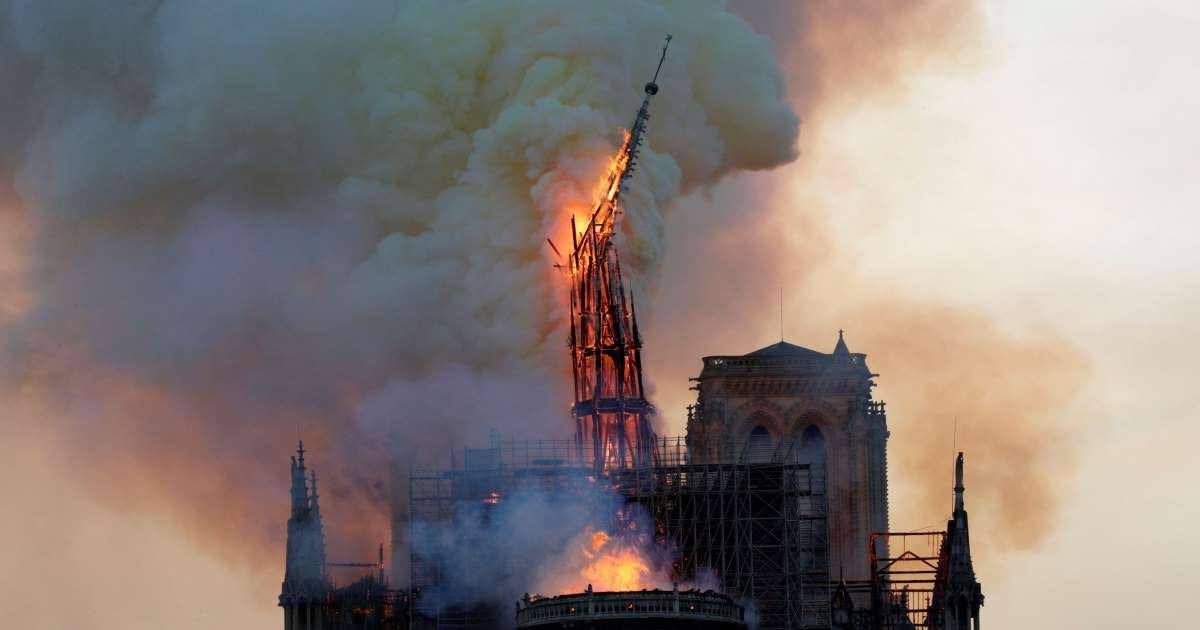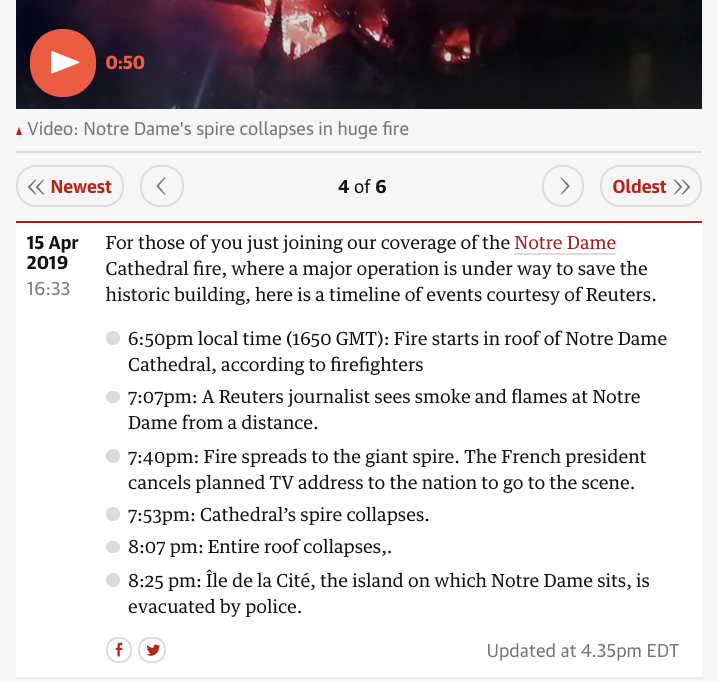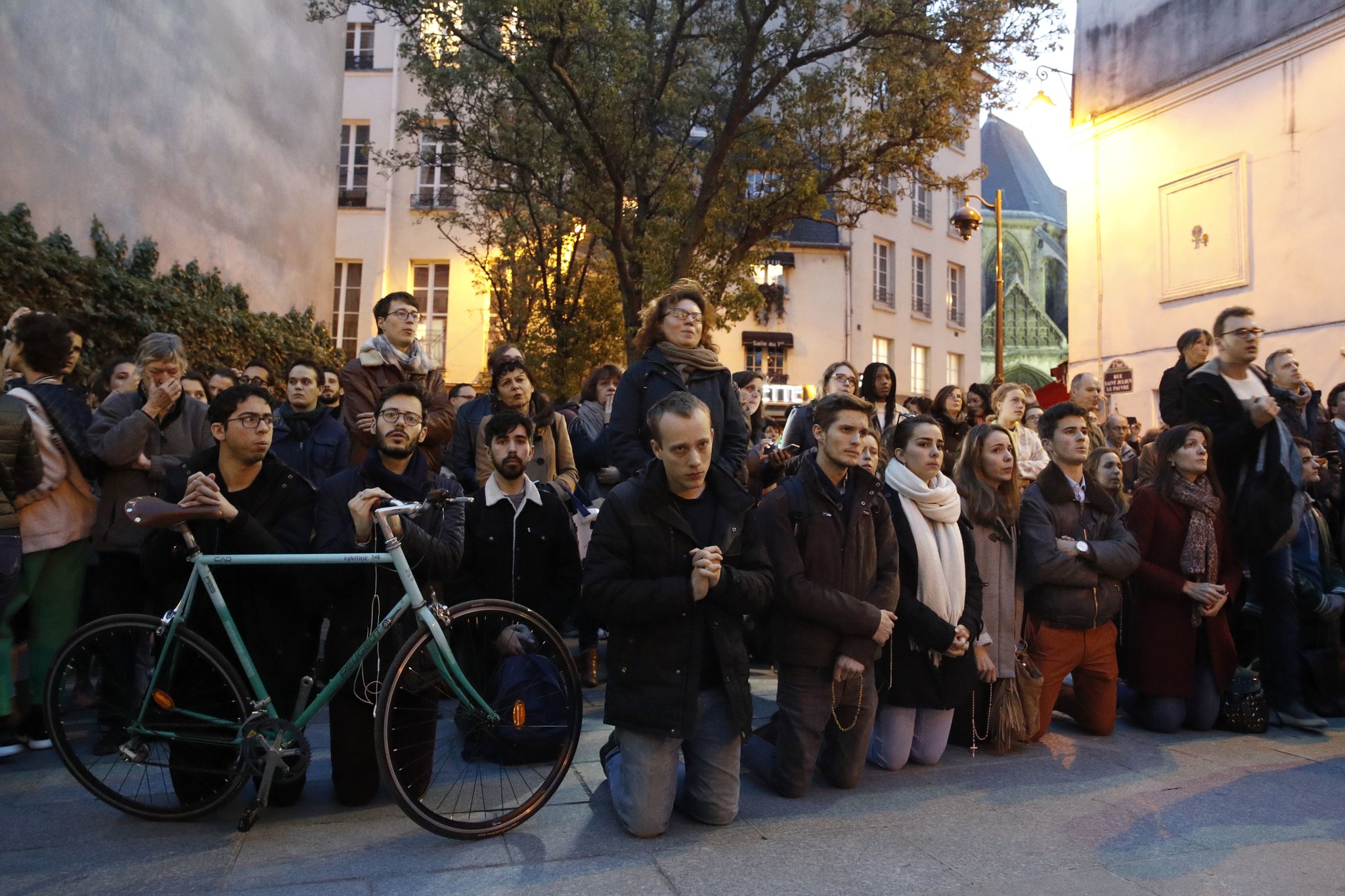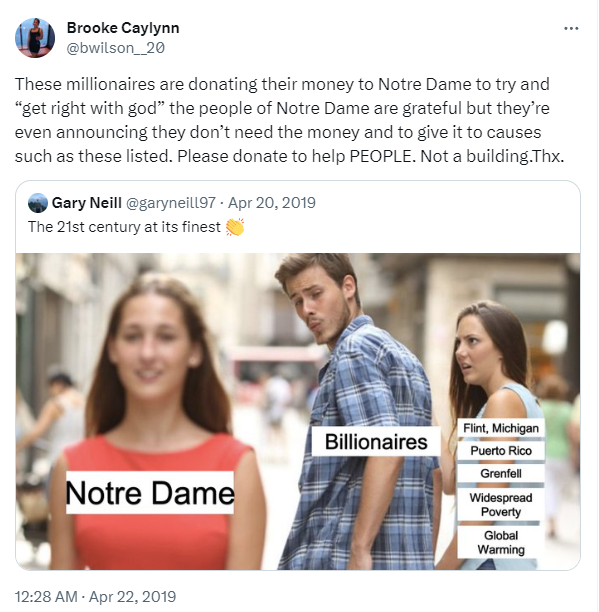How Media Rebirths Architecture
Imagined Frenchness through Notre Dame de Paris
Written in 2019, shortly after the fire.
"The overwhelming and bewildering concatenation of events experienced by its makers and its victims became a 'thing' - and with its own name: The French Revolution. Like a vast shapeless rock worn to a rounded boulder by countless drops of water, the experience was shaped by millions of printed words into a 'concept' on the printed page, and, in due course, into a model."
-- Benedict Anderson. Imagined Communities: Reflections on the Origin and Spread of Nationalism.
It was through “millions of printed words”, that an imagined Frenchness was forged. Nearly Two hundred years ago, with his novel Notre Dame de Paris, Victor Hugo coined the phrase “This Will Kill That”. Ever since, history has shown that neither the media nor the building was killed, and Hugo’s phrase has perpetuated time. The killing is not among the media, but rather, the imagined Frenchnesses. At any given time in history, as a new form of media replaces the older, so is the imagined Frenchness. While a part of Frenchness is being killed, another part is reborn. In 2019, Notre Dame de Paris suffered a traumatic fire that nearly killed it, the most devastating since the French Revolution. Amid the events, a new imagined Frenchness is emerging. As history continues to be written, the media revives and rebirths the architecture over again. We ask the question, what exactly is killed, and what is reborn?
The year is 1832.
Imagine a reader walking around Paris with the freshly printed Notre Dame de Paris in their hands, a new popular media around town. Just under four decades ago, they witnessed the beheadings on the guillotine of King Louis XVI, Queen Marie Antoinette, and revolutionary leaders among many others during the French Revolution. The cathedral Notre Dame de Paris was decaying and de-Christianized into a devastating state.
"The stained glass windows from the 12th and 13th centuries were replaced with clear glass…A pillar of the central doorway was demolished to allow grand processional carriages to pass through…More devastation was to come in 1789…The heads of the 28 statues in the Gallery of Kings on the main doorway were struck from their bodies…Many of its windows had been shattered and its treasures ripped out or desecrated. Birds flew in and out through the broken panes, nesting high in the galleries and overhangs of what was turning into a giant ruin."
-- Jose Luís Corral Fuentes. An 800-year History of Paris's Notre Dame Cathedral.
By the early 1800s, it was in a devastated state and the city officials considered demolishing it. As the reader walked around Paris, they were experiencing such a state of Notre Dame, a representation of the Frenchness of their time.
Through the words of Hugo, the 1832 readers looked back to the past glory of Paris in 1482, where people had not experienced the radical revolutionary Frenchness and the violent effacing of Gothic architecture. The media reminded the readers that the cathedral Notre Dame de Paris is worth preserving. Furthermore, the media situated them in a birds-eye view of contemporary history -- one Frenchness is killing another, but another is reborn.
With his prophecy “This Will Kill That”, Hugo expressed dualistic sentiments. On the one hand, he embraces the liberal intelligence of the book over the faithful power of the building -- democracy over theocracy. On the other hand, he remembers Gothic architecture as the great book of humanity, from an era when “Time is the architect, the whole people the builder.”, a kind of collective Frenchness that is being killed by individual authorship and radical revolutionary passions.
The popularity of Hugo's novel brought together a renewed Frenchness through the collective imagination. It created a fictional cathedral of Notre Dame de Paris and embodied the deformed hunchback Quasimodo, who is forever remembered for his qualities of devotion and kindness. Moreover, the advent of printing press technology played a pivotal role in disseminating the renewed Frenchness, refocusing the public interest in persevering Gothic architecture. Following this media effect, a restoration project was mobilized by Eugène Viollet-le-Duc from 1845 through 1864, with Hugo’s involvement in the Comité des Monuments et des Arts from 1835 to 1848.
Perhaps Hugo had conflicting feelings upon viewing the completed restoration:
On the one hand, he was convinced of the generative power of the written word to shape history, yet, on the other, he must have been dismayed to see its power result in the cosmetic covering up of the disruptive changes wrought by time, man and art that for him constituted a particularly moving and beautiful chronicle of their own.
-- Suzanne Nash. Writing a Building: Hugo's Notre-Dame de Paris.
Nonetheless, thanks to Hugo's book, a saved and revived building — Notre Dame de Paris, continues to symbolize Frenchness, an ever-changing Frenchness.
The year is 2019.

[Figure 1]Geoffroy Van Der Hasselt/Getty Images
"The crowd gasped and cried in horror when the spire fell.
'Paris is beheaded,' said Pierre-Eric Trimovillas, 32. "
-- Adam Nossiter and Aurelien Breeden. Fire Mauls Beloved Notre-Dame Cathedral in Paris. The New York Times.
The killing happened all over again. Notre Dame de Paris was on fire, and the media were coming together to witness, to participate, and to revive. On April 15, 2019, at 7:53 pm GMT+2, the Gothic spire atop Notre Dame de Paris fell as the world watched online. Live imagery [Figure 1] of the 'beheading' spread shockwaves, in an instant, sending the unfolding crisis across the world.
While the fire rages in the following hours, the whole world is in suspension. Except for the rolling live news feed [Figure 2] -- an update more dreadful than the previous, an image more horrifying overridden minutes ago. As firefighters battled the blaze, and people in Paris kneeled in prayers on the street [Figure 3], their images became figurative representations of the emotions within the broader online community. In that moment, everyone around the globe synchronized to experience the distress of a Parisian and the pain of a French. An imagined Frenchness permeates the air.

[Figure 2] Breaking News. “Cathedral Fire under Control after Spire and Roof Destroyed -- as It Happened.” The Guardian.

[Figure 3] Yoan Valat/EPA
To online communities, the words and images of Parisians elevated the burning of a significant cultural heritage to visualize that Frenchness is being “beheaded” in the tragic fire at the Notre Dame de Paris. Besides documenting a tragic event that destroyed portions of the Notre Dame de Paris, the online community is simultaneously rewriting, consuming, and reproducing the event as well, through posting, commenting, and reposting the images, videos and words.

[Figure 4] A Tweet that advocates against donations to Notre Dame de Paris.

[Figure 5] Design proposals of Notre Dame de Paris posted on Twitter.
The book, the media of Hugo's time, enabled independent critical reading and thinking, which became the imagined Frenchness of democracy. The internet and the online communities, media of our time, are staged for instant dissemination and reproduction of information by anyone through platforms such as Twitter and Instagram. The media today involves all people’s participation in the online townhall. Anderson’s imagined community, therefore, has been furthered as a collaborative community, full of impulse and bias, but it has a tremendous effect in the rebirth of Gothic architecture.
In the days following, hundreds of millions in euros of donations poured in; one French billionaire alone promised to give two hundred million euros within hours after the fire. Yet, some voices also emerged to advocate against giving attention to such donations and promoting humanitarian causes to help the actual people in crises elsewhere [Figure 4]. In the architectural design and preservation community, architects shared design proposals for free to be used to restore the cathedral [Figure 5]. It sparked a moment of creativity, as well as aesthetical debates.
Once again, it seemed that the media had provided everything necessary to rebuild the cathedral, reversing the 'beheading' and erasing the tragic moment from history. Yet, rebirth always coincides with another form of killing. In the aftermath of the fire, the media made no further mention besides 'one firefighter seriously injured.' While the media directed donations toward rebuilding the cathedral, donors seemed to forget that the earth could no longer provide the forest of large oak trees needed for constructing the wooden beams that composed the destroyed roof attic. At the moment the media 'unkills' the building, does it shatter our collective empathy and our value for human life? Does it overshadow our awareness of the environmental crisis?
What kills what? What rebirths what? It is an eternal question.
---
Bibliography
"A Challenge of Rebuilding Notre Dame: The Forests That Supplied Its Wood Are All But Gone." Fortune. Accessed May 07, 2019. http://fortune.com/2019/04/16/notre-dame-after-fire-rebuild/.
Anderson, Benedict R. OG. Imagined Communities: Reflections on the Origin and Spread of Nationalism. 2006 ed. London: Verso, 1983.
Buringh, Eltjo; van Zanden, Jan Luiten: "Charting the 'Rise of the West': Manuscripts and Printed Books in Europe, A Long-Term Perspective from the Sixth through Eighteenth Centuries", The Journal of Economic History, Vol. 69, No. 2 (2009), pp. 409–45 (417, table 2)
Fuentes, Jose Luís Corral. "An 800-year History of Paris's Notre Dame Cathedral." National Geographic. April 18, 2019. Accessed May 07, 2019. https://www.nationalgeographic.com/archaeology-and-history/magazine/2017/05-06/notre-dame-de-paris.html.
Hugo, Victor, and A.J. Krailsheimer. Notre-Dame de Paris. 2009 ed. Oxford University Press, 1993
Lyons, Kate, et al. “Cathedral Fire under Control after Spire and Roof Destroyed – as It Happened.” The Guardian, Guardian News and Media, 16 Apr. 2019, www.theguardian.com/world/live/2019/apr/15/notre-dame-cathedral-fire-paris-france-landmark-live-news.
Nossiter, Adam, and Aurelien Breeden. "Fire Mauls Beloved Notre-Dame Cathedral in Paris." The New York Times. April 15, 2019. Accessed May 06, 2019. https://www.nytimes.com/2019/04/15/world/europe/notre-dame-fire.html.
Ravenscroft, Tom, and Tom Ravenscroft. "Seven Alternative Spires for Notre-Dame Cathedral." Dezeen. April 27, 2019. Accessed May 07, 2019. https://www.dezeen.com/2019/04/25/notre-dame-spire-alternative-cathedral-designs/.
Perez, Chris, and Chris Perez. "Firefighter 'seriously Injured' Battling Notre Dame Blaze." New York Post. April 15, 2019. Accessed May 07, 2019. https://nypost.com/2019/04/15/firefighter-seriously-injured-battling-notre-dame-blaze/.
Patel, Sona, and Alan Yuhas. "Fire at Notre-Dame Cathedral Leads to Expressions of Heartbreak Across the World." The New York Times. April 15, 2019. Accessed May 07, 2019. https://www.nytimes.com/2019/04/15/world/europe/paris-cathedral-fire.html.
Quinn, Ben, Frances Perraudin, Mark Brown, Kim Willsher, Matthew Holmes, Jessica Elgot, and Angelique Chrisafis. "Notre Dame Fire: Artworks to Be Sent to Louvre as Donations Pour in – as It Happened." The Guardian. April 16, 2019. Accessed May 07, 2019. https://www.theguardian.com/world/live/2019/apr/16/notre-dame-cathedral-fire-paris-france-macron-live-updates.




